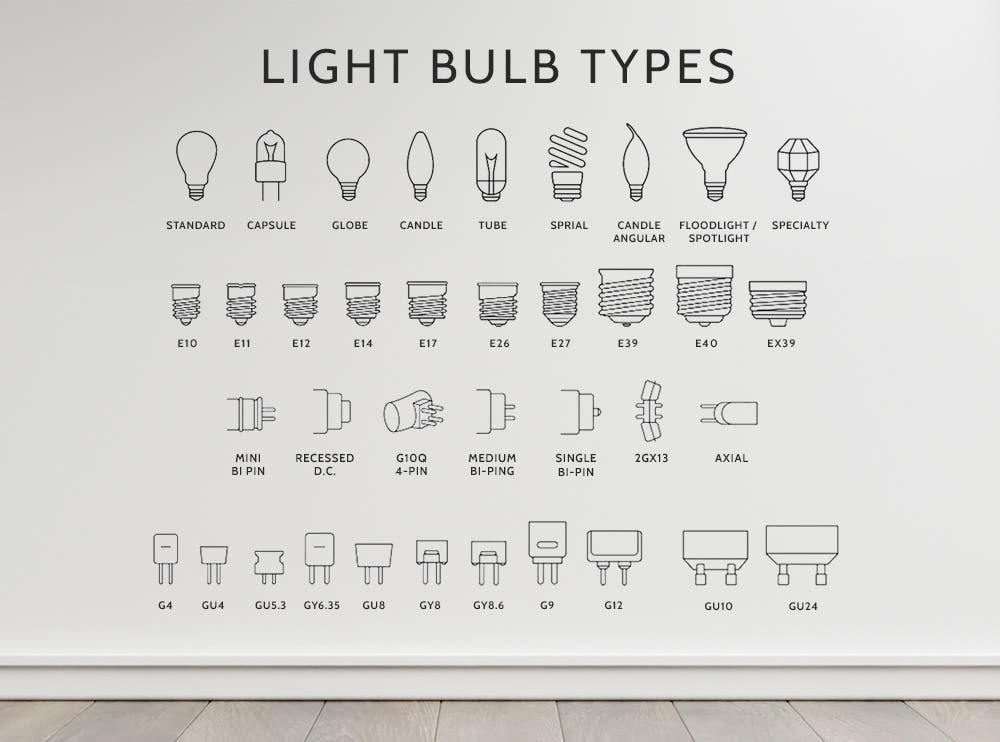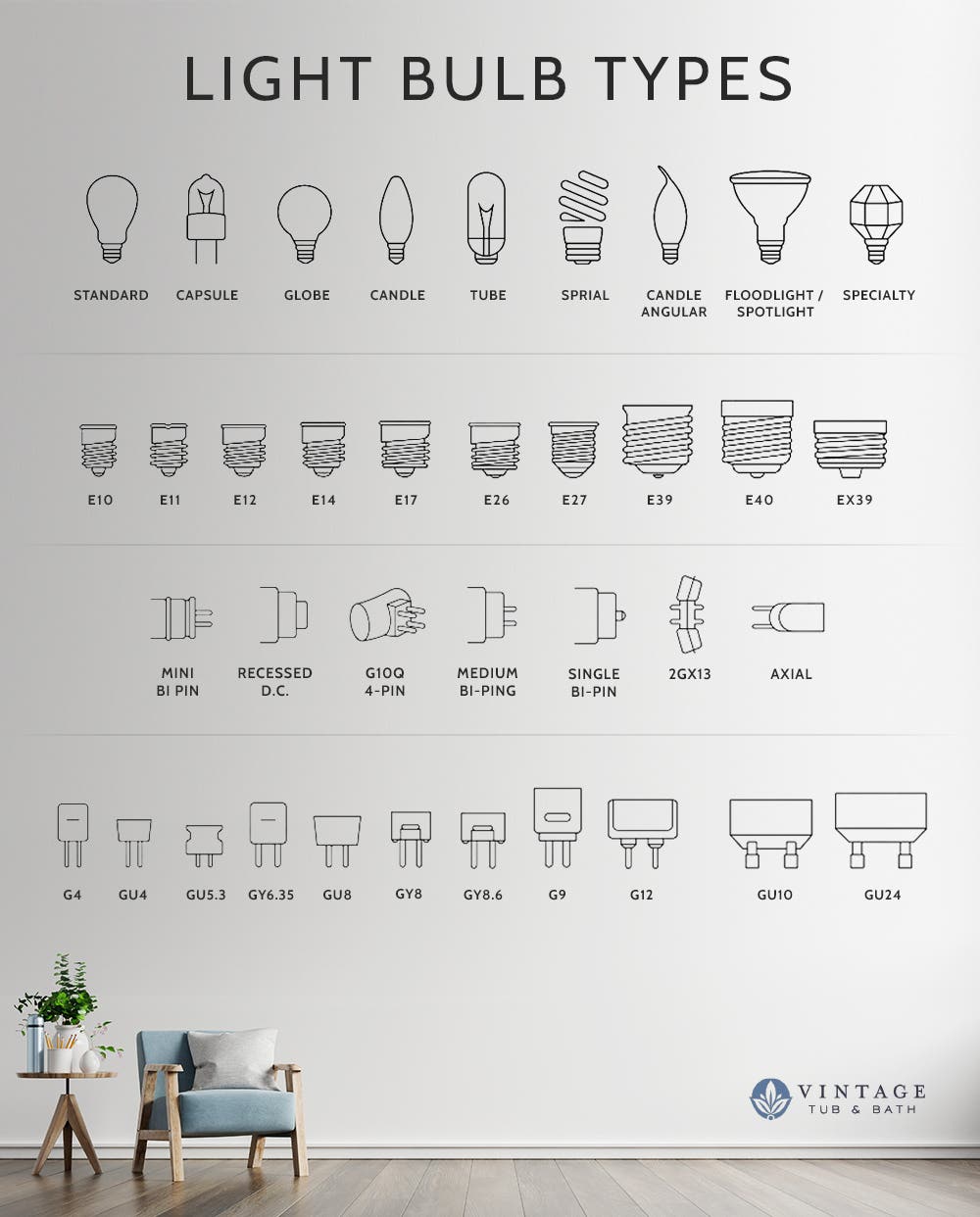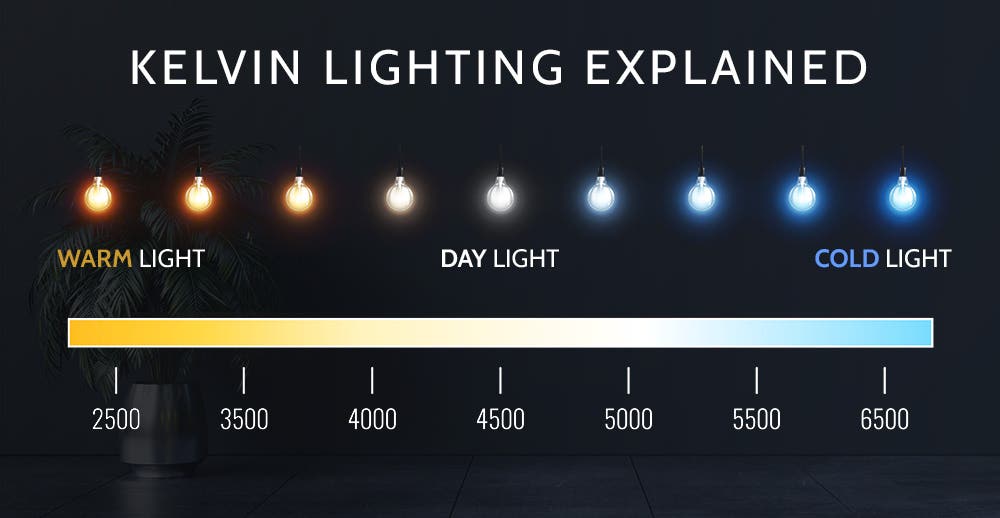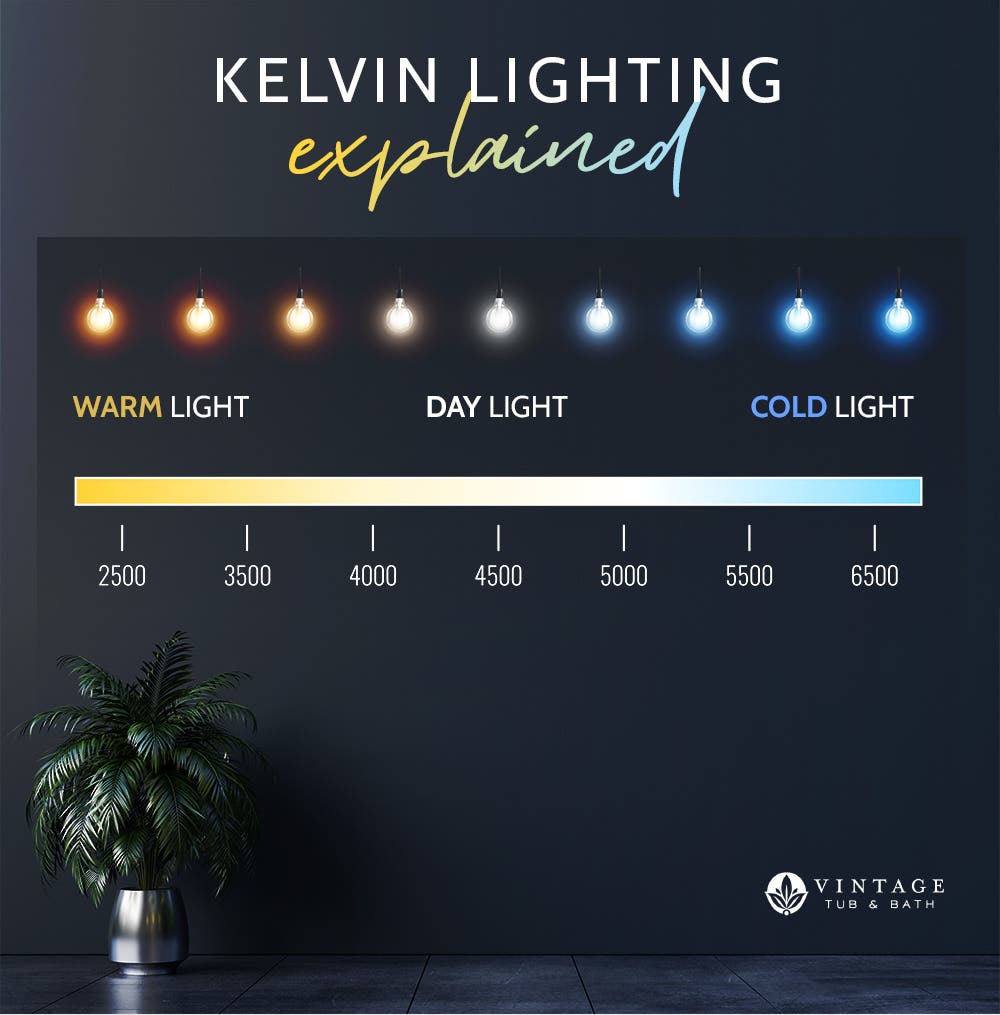HOME LIGHTING BUYING GUIDE
Most people don’t give conscious thought to lighting on a daily basis. They see a chandelier in a dining room or accent lighting in the living room and might think how nice it looks, then move on. However, the truth is that light fixtures can completely change the ambiance of a room just by changing the types of lighting they emit.
Ambient lighting can also have significant effects on a person’s mood, which is a fact that often goes unrealized. Your home needs to have the right lighting in every room for optimal aesthetics, functionality, and health.
INTRODUCTION TO LIGHTING PRINCIPLES
Science shows that light plays a significant role in regulating levels of melatonin and serotonin in the body, which affects sleep, memory, behavior, appetite, and mood. Consequently, different types of lighting can influence people’s emotional state and overall well-being.
The Psychological Impact of Light and Color
Emotions tend to be stronger when a person is in bright light. People are more productive and happier when there is more natural lighting, too. Blue light from devices can make it difficult for people to sleep. Soft lights in classrooms help students fidget less.
Natural lighting that changes throughout the seasons can also impact wellbeing. Seasonal Affective Disorder is a condition that occurs during certain seasons, particularly fall and winter, when the days are shorter and there is less natural light. The lack of sunlight can cause people to experience depression for months until longer daylight hours return in the spring.
These are just a few examples that show the significant impact that various lighting types can have on our daily lives. It's important to pay careful attention to all light sources within the home, from table lamps to task lighting and floor lamps, to ensure a positive and well-lit environment.
Lighting Design Factors
If you think your home needs a makeover, you may want to consider changing the light fixtures first. It might surprise you to learn that, sometimes, all a dining room or living room needs is a different lighting design!
Unless you’re just going to replace different types of lightbulbs in the home as a DIY home lighting project, consult a professional before you get started with a new lighting design. The interior design of your home can be significantly altered by adding different lights, and you’ll want to avoid creating an unwanted mood in any room.
The factors that will determine the right lighting for your space include:
- Size and space: The size and layout of your space will dictate the number and placement of light fixtures needed to provide sufficient illumination.
- Age and preference: Personal preference and age can influence the type of lighting you prefer. For example, older individuals may prefer brighter, more focused lighting while younger individuals may prefer softer, more ambient lighting.
- Ceiling height and shape: Ceiling height and shape can affect the type of light fixtures that can be used in a space, as well as the direction and intensity of the light.
- Color of walls and furniture: The color of walls and furniture can impact the color appearance of the lighting in a space. Light fixtures may need to be adjusted to complement the colors in the room.
- Existing lights and electrical setups: The current lighting and electrical setup in your space will impact the feasibility of adding or adjusting lighting fixtures.
- Points of interest, artwork, and highlight areas: Lighting can be used to draw attention and highlight specific areas or features in a room, such as artwork or architectural details.
- Shadows and reflections: Shadows and reflections should be taken into consideration when selecting fixtures and placement, as this can affect visibility and task performance.
- Daylight integrations: Natural daylight can impact the color and level of illumination in a space, and may need to be supplemented with artificial lighting to provide optimal lighting conditions.
- Surface characteristics: The type of surfaces in a space, such as glossy or matte finishes, can affect the reflection and absorption of light.
- Color appearance: The color appearance of lighting can influence the mood and ambiance of a space, and may need to be adjusted to complement the overall design and aesthetic.
- Lighting controls and distribution: The type of lighting controls and distribution in a space can impact the ease of use and effectiveness of the lighting.
- Source, task, and eye geometry: The angular connection between the type of light source, the task being performed, and the occupant, can affect the way a space is experienced.
- Economics and energy efficiency: Economic and energy considerations can impact the type and number of fixtures used in a space, as well as the type of light bulbs and lighting controls.
- Spatial perceptions: The way lighting is perceived in a space can alter the overall design and functionality of the space.
- Level of illumination (lux): The level of illumination needed in a space will depend on the different types of tasks being performed and the personal preferences of the occupants. Take into consideration what the primary function of the space will be.
- Psychological and physiological factors: Lighting can impact psychological and physiological factors such as mood, alertness, and sleep quality. The hue and amount of lighting may need to be adjusted to promote optimal health and well-being.
Since this is a fairly extensive list of factors, you can see why it’s recommended that you enlist the help of an interior design professional for recommendations and suggestions! You can call our customer service team or use the chat feature on our website to get expert help tailored to your needs.
Lighting Design Layers
You may or may not know that lighting is said to have different “layers” in a room. While some people claim there are five layers of lighting, most break it down into just three general layer categories: ambient lighting, task lighting, and accent lighting.
Ambient Lighting
Ambient lighting describes the general light that fills a room. The light source could be overhead lighting, recessed lighting, wall lights, floor lamps, table lamps, or natural light from windows. Ambient lighting provides enough illumination for people to easily see and move within the room safely.
Task Lighting
As you might guess, task lighting is focused light used for specific tasks. These could be cooking, reading, or working on a computer. Popular task lighting options include pendant lights, wall sconces, track lighting, desk lamps, and overhead lighting, to name a few.
Accent Lighting
Accent lighting is light that is used as a decorative element. It typically provides a focal point in a room to highlight features like plants, fine china, antiques, or artwork. Common sources of accent lighting include uplights, wall sconces, and undercabinet lighting.
When the right types of lighting design layers are used together, they can create a well-lit, visually appealing, and functional space.
TYPES OF LIGHTING FIXTURES
You can use an enormous array of light fixtures in your home to create various functional, beautiful spaces. A good lighting guide will give you tips and suggestions on how to choose the right ones, but browsing a wide selection online will also be a tremendous help!
Some of the most common types of light fixtures include the following:
- Ceiling lights are the most common type of light fixture in homes and offices. They provide bright overhead lighting for productivity purposes.
- Wall sconces are wall lights and typically provide the right lighting for specific areas like bedrooms, hallways, and living rooms.
- Floor lamps are freestanding lamps that light up specific areas. They are often used as bedroom lighting or living room lighting. They are often used near sofas and chairs.
- Table lamps are lamps that sit on tables to provide light for specific areas near those tables. You can often find these on end tables, desks, and nightstands.
- Pendant lighting is popular in any room that needs general illumination. They are hanging lights that typically only include one lightbulb.
- Chandeliers are elaborate, elegant lights often found in homes and offices. They hang from the ceiling.
There are many additional types of light fixtures out there, from barn lights to industrial lights and many in between.
TYPES OF LIGHTBULBS
Four main types of lightbulbs are available for residential use: fluorescent, LED, halogen, and incandescent bulbs.
Compact Fluorescent (CFL) Lightbulbs
Compact fluorescent bulbs, abbreviated CFL bulbs, use gas to create light. They are more energy-efficient than halogen or incandescent lightbulbs and last longer, too. They do have a reputation for flickering and taking a little while to warm up, though.
Light-Emitting Diode (LED) Lightbulbs
LED bulbs use light-emitting diodes to create light. They are the most energy-efficient type of bulb and also last the longest. They don’t flicker and also don’t produce any heat.
Halogen Lightbulbs
These bulbs are a type of incandescent lightbulb that use gas to fill the bulb, which makes them brighter than regular incandescent bulbs. They produce more heat, but they last longer, though not as long as LED lights.
Incandescent Lightbulbs
If you’re looking for modern bathroom lighting ideas, you’ll likely find an array of incandescent lightbulbs as options to use. These bulbs are dimmable and adjustable, not to mention available in an array of color temperatures.
Incandescent bulbs are the most common type of standard bulbs used today. However, they produce more heat than LED lights, don’t last as long, and are not as energy efficient.
The type of lightbulb you choose will depend on your preferences and needs. Incandescent bulbs are a good option if you want an inexpensive lightbulb that produces a lot of light. If you need an energy-efficient bulb that is also long-lasting, consider an LED or fluorescent lightbulb instead.


WHICH LIGHT TEMPERATURE WORKS BEST IN YOUR HOME?
Light temperature is a measure of the coolness or warmth of light. Light with a warm color temperature is more yellow, while light with a cool color temperature is bluer.
Light temperatures are measured in Kelvin (K). The higher the Kelvin temperature, the cooler the light.
When choosing the best light temperature for your home, several factors and features must be considered. Many homes have several different light temperatures, depending on the spaces and rooms within.
Many things, including lumens and wattage, create light temperatures. Lumens are a measure of the amount of light a lightbulb emits. The more lumens a bulb has, the brighter it will be. Watts are a measure of the energy a lightbulb uses. The higher the wattage of a lightbulb, the more energy it uses.
You must choose the right light temperature, wattage, and lumens for your needs. Light temperatures depend on the type of room you are lighting. For example, you may want to choose a cool color temperature for bathroom and kitchen lighting and a warmer temperature for the living room and bedrooms.
The wattage will depend on the size of the room you are lighting. The larger the room is, the higher the wattage should be.
The lumens you choose will depend on the type of lightbulb you are using and the amount of light you need. You might choose a 600-lumen lightbulb for a small room and a 1,000-lumen bulb for a large room.


LIGHTING CERTIFICATIONS
You should be aware of a few different lighting certifications used for lighting products:
- ETL is a certification organization that tests products for safety. ETL-certified products have met certain safety standards.
- CSA is a certification organization. CSA certification means products have met this organization’s standards for safety and performance.
- ANSI is an organization that develops standards for many products and services. Those that earn ANSI certification meet quality, safety, and performance standards.
- UL is a certification organization that tests and certifies safe products. Lighting products that are UL-listed meet UL’s safety standards.
- Energy Star is a certification program run by the U.S. Department of Energy and the Environmental Protection Agency. Products that are Energy Star certified meet specific energy efficiency standards.
These certifications can help you choose lighting products that suit your needs and preferences while giving you an idea of their quality and safety. It’s highly recommended that you look for products certified by these reputable organizations for optimal safety and energy efficiency.
LIGHTING BY ROOM
Need to know how to pair kitchen and dining lights? How high should a light be above a kitchen table? What is the best light for a foyer? These are all questions a good lighting buying guide can help with. The following are some suggestions to help you find the right lighting for your rooms:
Foyer
It’s important that your foyer is well-lit, so a general light fixture like a ceiling light or a couple of wall sconces will provide the most illumination. For a touch of style, you can add a chandelier or pendant light.
Living Room
The living room is a multi-purpose space, so you’ll need to layer lighting options. Install a pendant light or a chandelier to illuminate the overall space of the room. Add table lamps or floor lamps for projects and reading.
Kitchen
The kitchen is a workspace, so plenty of light is needed. Install a large, bright general light fixture like a kitchen island light or ceiling light for basic illumination. Task lights, like under-cabinet lighting, are a great idea, as is over-the-stove lighting.
Dining Room
You want a warm and inviting atmosphere in the dining room, so most people choose a chandelier or pendant light with a warm hue lightbulb for basic illumination. They also often have accent lights to create a more intimate setting.
Bedroom
The bedroom is a place to relax and unwind, so you want a soft, calming light. Consider adding wall sconces and bedside lamps for focused illumination and a relaxed setting.
Bathroom
In the bathroom, you get ready for the day, so you need plenty of bright light. The best options for this space would be a lighted bathroom mirror, vanity light or scones. You can also add shower lights or other task lights as well.
The Office
The office in your home needs a well-lit space conducive to getting work done. Choose a chandelier and sconces, along with a desk lamp for focused lighting. Consider a swing-arm light for specific tasks if needed.
CHOOSING THE BEST LIGHTING FOR YOUR HOME
When choosing the right lightbulbs, temperature, and light fixtures for your home, consider the size of the room, the decor, your needs, and the activities for which the room is used. At Vintage Tub & Bath, we offer an immense inventory of lighting options for every room in your house. Browse our selection and save with lighting from Vintage Tub & Bath!

Login and Registration Form